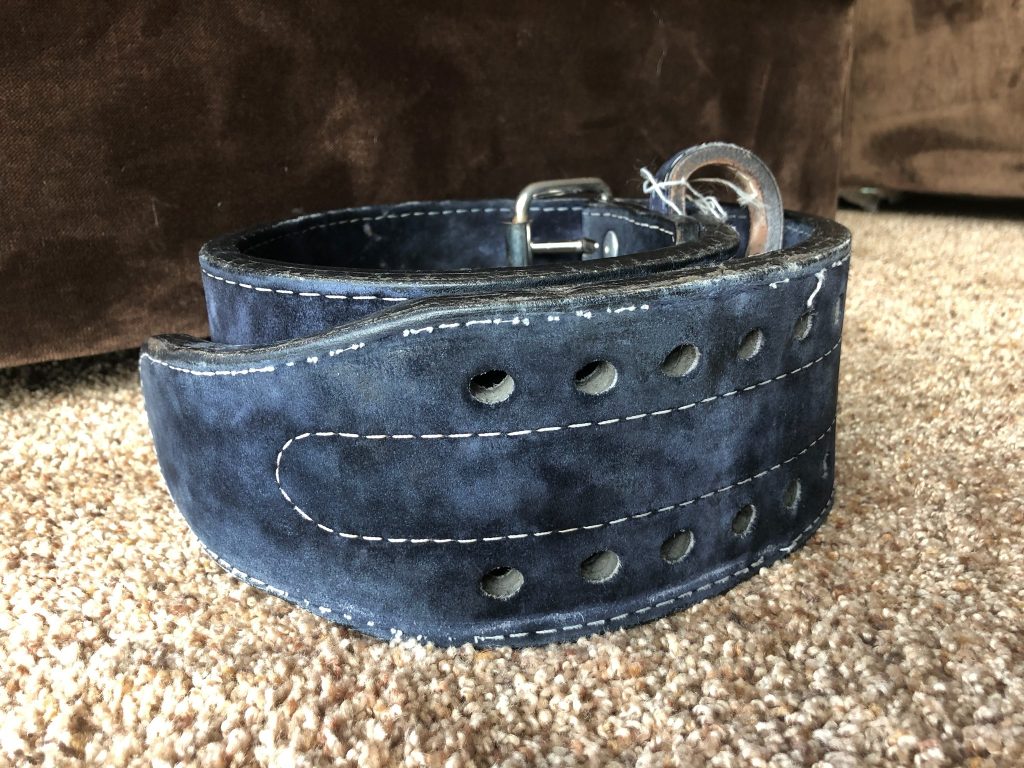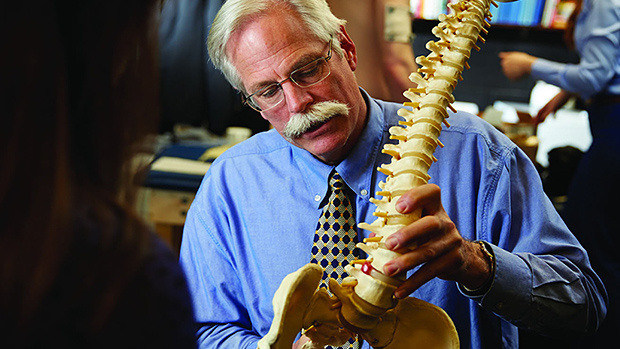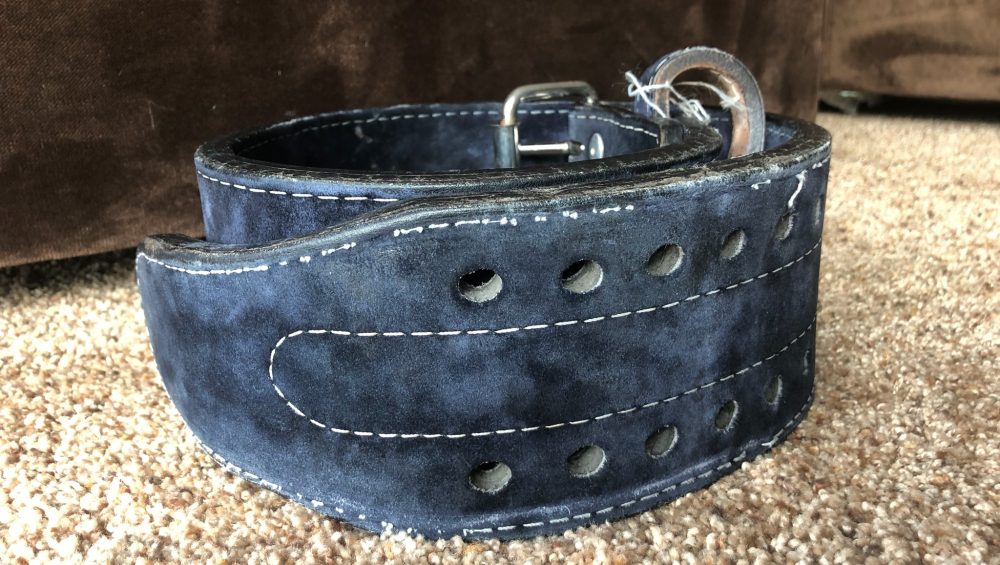Whether or not to wear a weight belt when lifting weights can be a conundrum. On one side of the fence you have those who swear by it and would never think about lifting (much less looking) at a weight without one.
Not exactly ideal.
And then on the other side you have those people who are “purists” and think wearing a belt should be avoided at all costs and that you’re cheating if you do so.[footnote]These are the same people who think SUMO deadlifts are cheating, but when you bring up widening one’s grip on the bench press in order to reduce the ROM and how that’s essentially the same thing, there’s nothing but cricket’s chirping.[/footnote]
Not exactly an ideal train of thought, either.
Sooooo, what’s the deal then?
Let’s discuss.

Benefits of the Weight Belt
The obvious starting point is to ask:
“Why do people start wearing a weight belt in the first place?”
My guess is most start because they see others using one in the gym and figure that’s just what the cool kids do. I mean, if you’re just starting out and new to the gym what other conclusion is there?
– That person over there performing lat pulldowns is wearing one:
– And so is that person over there performing deadlifts who looks and sounds like he’s passing a kidney stone the size of Kansas:
One exercise is pretty inane, the other extreme, and both are utilizing a weight belt.
What gives?
I can understand the confusion and tendency for some lifters to think that wearing a weight belt is somehow unspoken gym etiquette or something that has to be done at all times; you know, for safety.
To be candid: Neither are cemented as fact.
Examples of Actual Gym Etiquette:
- Re-racking or putting away your weights when done.
- Clearing the way for others to grab dumbbells from the rack when you’re using dumbbells. I.e., don’t perform bicep curls in front of the mirror directly in the way of the DB rack.
- Wiping up your sweat after using a bench or piece of equipment.
- Avoiding direct eye contact (of 3 seconds or more) with anyone when performing Hip Thrusts.
- Pumping the brakes on the Ax body spray.
There’s no “rule” that states you have to use a weight belt for every exercise.
There are, however, legitimate reasons where you may want to use one:
1. Improved Performance
Strength coach and researcher, Greg Nuckols, wrote a thorough piece a few years ago on the efficacy of weight belts and one of the main points was that a bevy of research shows that wearing a weight belt can allow someone to lift anywhere from 5-15% more weight.
As Greg notes: Yes, there are instances of lifters NOT wearing a belt and still lifting an appreciable amount, but since you’re not them let’s just say that for 99 out of 100 people, wearing a belt will help you lift more weight and maybe even help you win a cage fight.
How?
Improved intra-abdominal pressure.
IAP helps to counter shear load on the spine; a sort of safety net if you will. I’m not going to go into the details here on this post, but I’d encourage you to check out anything and everything Dr. Stuart McGill has written on the topic. He’s the world’s foremost spine biomechanics researcher (and mustache haver).

It behooves anyone interested in lifting heavy things to seek out way to improve their intra-abdominal pressure.
This is a good thing.
That being said, learning how to appropriately push into the weight belt – on all sides – to enhance IAP is key.
Conversely, there is a drawback.
IAP increases blood pressure, which can be a contraindication for some.
2. Faster Lifts
No need to pontificate here.
Wearing a weight belt, for all intents and purposes, allows you to perform your lifts faster.
3. More Repetitions
And lastly, wearing a belt allows for more repetitions (in the ballpark of 1-3) to be performed at a given load.
In concert: More weight, performed faster, and for more reps = a nice recipe for added muscle and strength. Not a bad tradeoff if you ask me.
There is a Caveat
Personally speaking I don’t advocate using a weight belt until working with loads approaching 85% (and up) of one’s one-rep max. I can’t say I have a slew of PubMed articles in my pocket to back up my claim…
…it’s just a combination of anecdote and intuition.
It’s basically a general rule I use – kinda like wearing pants on Thursday – that can be a judgement call the day of. I mean, there are instances where, depending on the exercise, I’ll toss on the belt for my last challenging set (or two) because read above.
Too, I know there’s a myth out there stating that if you wear a weight belt incessantly that you run the risk of weakening your lower-back muscles, to the point where you then rely on it or else your muscles shut down.
I think it’s exactly that…a myth.
But, again, intuition tells me – outside of prior/current injury – you’re likely not gaining anything wearing a belt for non-challenging sets anyway.
When NOT to Wear a Weight Belt
❌ For every set, of every exercise, on every day of training. Again, I tend to lean more on the side of saving the belt for high(er) intensity sets.
❌ In the shower.
And that’s pretty much it.
That being said, I do find value in purposely going through blocks of training where the belt is not utilized no matter what.
For instance, for the past five weeks of my training I’ve made a conscientious effort to NOT use a weight belt for all my squat and deadlift sets.
Dafuq, Tony?
Here’s me last week performing 540×3 on my deadlift.
I think there’s a lot to be said about getting comfortable being uncomfortable.
For example, when my wife and I first started dating, she was studying to be a psychologist, and felt it imperative to the growth of our relationship to talk about our feelings.
I just assumed throw an ax into my face than do that.
It sucked at times and it was hard for me, but I did it…and our relationship (and now marriage) is all the better for it.
Likewise, purposely making training harder – no belt, shorter rest periods, using crappy bars, etc – is a germane way to level up your subsequent training blocks.
I mean, I totally could have done like 31 reps in the video above if I had a weight belt on.
It’s science.




